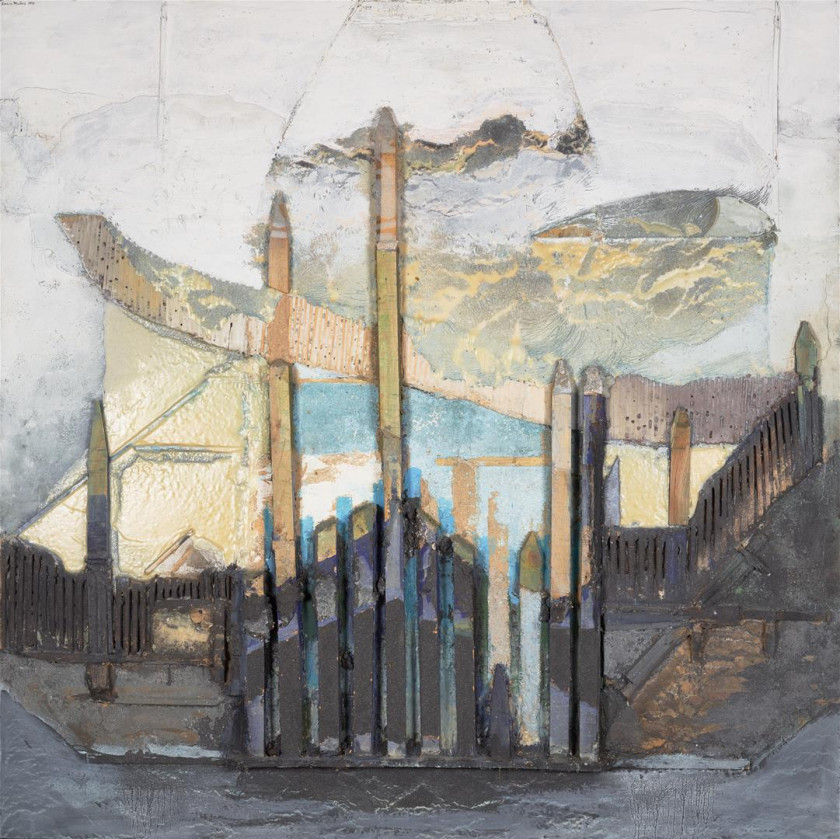Jiuhua
painting


1992
Resin, wood, sand and oil on wood
210 x 210 cm
Jiuhua is part of the last stage group of works by Lucio Munoz whose production, as a leading proponent of Abstract Expressionism and Art Informel in Spain, goes through a constant transformation from the mid-50s onwards. Munoz conceived his creative outputs as “new beings, objects and landscapes just as real as those which exist, but new and his own''. He included in his pseudo-paintings, as he called them, all sorts of unusual and humble materials such as burnt paper, cardboard, plywood and carvings, electrical tape, soil, marble and saw dust. In accordance with the Informalist aesthetic, he performed disruptive interventions on canvas such as burning, cutting and scratching, torsion and perforation. Semi-abstract, with constant evocative references to reality, a nightly and disquieted atmosphere pervades his five decades' work, encompassing a broad range of techniques, including carving, engraving, printing, collage and painting.
Its enigmatic title - Jiuhua refers to a sacred Buddhist mountain in China - doesn’t seem to provide a key to access the work. The viewers are immersed in a sort of suburban environment recalling northern architecture and streets rather than a luxuriant Chinese mountain and its suspended temple. The oneiric landscape is filled with angular, sharp and tall forms, evoking peculiar obelisks, compact fences, gates, slanting roof, evanescent bridge-like shape surmounted by an unidentifiable tear shape dividing the pictorial space in two areas. The base level is plunged in a somber mood, with a predominance of black and dark-grey palette, while the upper part presents lighter tones, a creamy-whitish-grey evoking a cloudy-foggy-heavy sky. The central intermediate zone offers light blues, with soft pinks and camel-ochre hues, reminiscent of the effect produced by the first rays of light piercing through the night. Triangles, vertical lines, perpendiculars and diagonals contrast with the shapeless upper part, which triggers some hallucinatory mode of perception.
Katherine Sirois